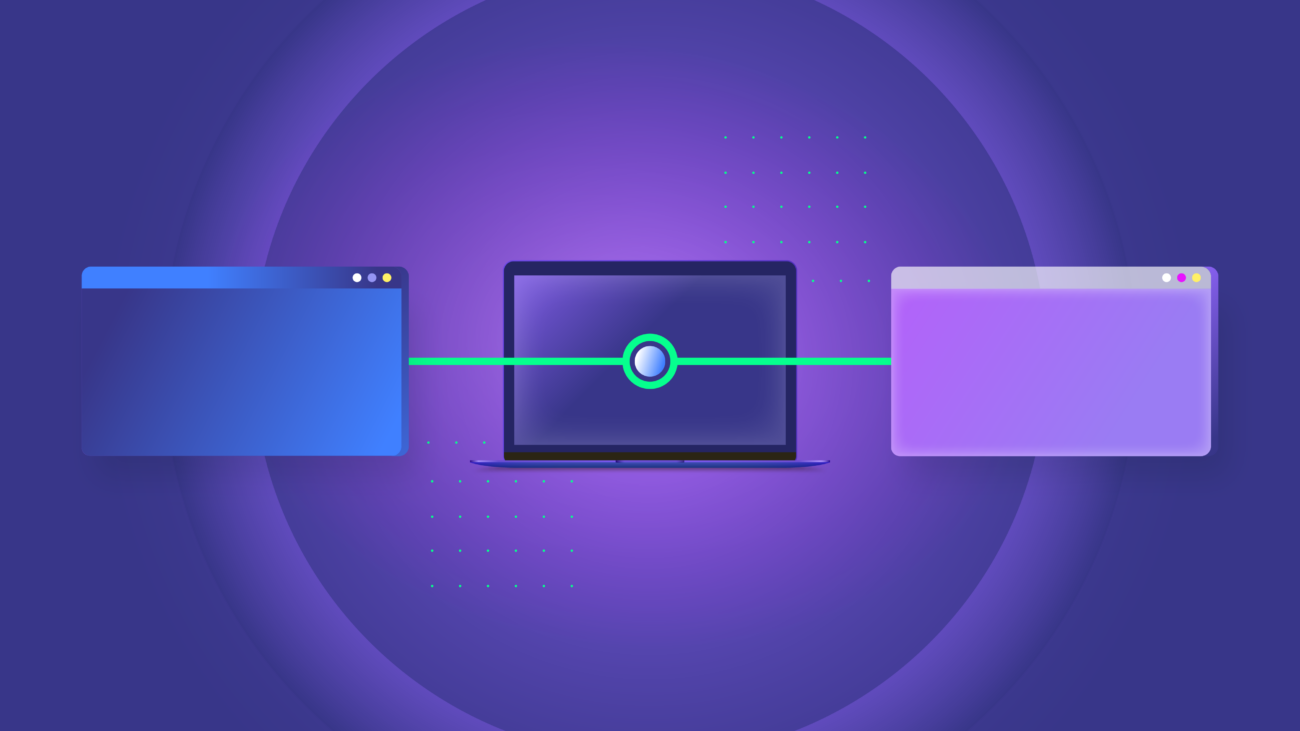Having a legacy application in your tech stack can be an issue when you want to integrate it with your modern stack. The application might be too valuable to abandon and too old to integrate with newer technologies. So what gives? This is where legacy system integration comes in.
You need to find technologies that can connect to endpoints of older and newer systems without needing massive changes.
But what challenges do legacy systems pose for enterprise system integration?
In this article, I’ll cover everything you need to know about legacy system integration. Continue reading to find out how to sync modern cloud and SaaS systems with legacy applications.
What is Legacy System Integration?
Legacy system integration is the process of connecting legacy infrastructure with modern databases, ERPs, CRMs, and SaaS applications.
Organizations, especially in healthcare, rely on legacy systems such as Windows 7 and Adobe Flash. Some banks and financial institutions still rely on IBM’s mainframe systems. Even in hypermodernized spheres such as aerospace, you can see some systems running on COBOL and FORTRAN.
So, the process of connecting these outdated systems with modern ones is the entire point of legacy software system integration.

When is the Right Time to Integrate Legacy Systems?
If the legacy software is running critical processes in your workflow, here are signs that you should integrate it ASAP.
- Migrating to a modern alternative will cost too much.
- Migrating to a new platform is a compliance hurdle, especially in healthcare or finance.
- You need your data in a modernized system with a more intuitive interface or dashboard.
- The processes running under the legacy system are too important for the continuity of business operations.
- The legacy platform is not interoperable with modern applications, so it requires a unique integration approach.
- If you attempt to modernize the system, a lack of updates and support for its infrastructure will pose a significant security threat.
Once you spot any of these telltale signs, start weighing the available integration options.
The Best Options for Integrating Legacy Systems
Here are ways to integrate legacy software:
- Middleware (Enterprise Service Bus): The middleware sits between two systems and curates bidirectional data exchange. An enterprise service bus or API gateway serves as the intermediary for these transactions.
- Point-to-point integration (P2P): P2P integration is used for direct connections between systems without a middleware or third party. This usually works when both systems are compatible. The connector could be a custom script or an API.
- API integration: API integration involves connecting to the APIs of both systems using webhooks and other protocols to enable data exchange in real time. APIs that can be used for legacy systems integration include REST, SOAP, RPC, or open APIs. This is also called embedded integration.
- Robotic Process Automation (RPA): RPA is the use of automation to handle repetitive tasks while increasing the accuracy of every action. This is also known as automated integration.
- IPaaS (Integration Platform as a Service): This integration option encompasses delivery, maintenance, updates, support, and testing into a single service. IPaaS solutions for ERP legacy system integration include Zapier and Informatica.
Before choosing an integration pattern for your legacy systems, consider the cost, technical debt, and cultural fit.

What are the Challenges of Legacy System Integration?
Legacy system integration is not your run-of-the-mill integration scenario. Many challenges and hurdles await you on every corner. Let’s discuss them in greater detail:
Lack of Proper Documentation
The problem with legacy systems is that once the updates stop coming, the documentation stalls. Maybe the developers who worked on the project have moved on to other things.
Whatever the case, this leaves users of the legacy system with outdated documentation. As a result, they’d first need to decipher how the technology works before building or buying an integration.
Lack of Technical Expertise
As systems and technologies age, developers move on from them. This shrinks the pool of qualified technicians who can work with technologies like COBOL and FORTRAN.
So unless your team has one of these rare gems on standby, you’ll have to find someone with infrastructure expertise in a developer haystack.
Company Culture
Sometimes, the legacy system is embedded too deeply into the organization’s ecosystem that any attempts at integration would cause massive workflow disruption.
Other times, employees—especially those with non-technical backgrounds—would prefer using the familiar system instead of learning a new one from scratch. This is common in healthcare and logistics companies.
Security Issues and Compliance Concerns
In highly regulated industries, integrating sensitive data with a new platform could be a compliance violation.
Apart from that, a lack of updates leaves vulnerabilities that hackers can exploit. So integrating your modern software with a partner’s legacy system could open a backdoor for unauthorized users to enter your system.
Modernization Costs
Some legacy systems are so out of date that you’d need to modernize them before they are fit for integration. Most organizations would rather abandon the modernization process instead if the costs are not worth it.
Proprietary Architecture
Legacy systems often contain proprietary architecture. This means that even if you have the technical expertise to alter or modernize it, you won’t be able to do so without written permission from the original vendor. So you’re locked in.

What are the Benefits of Legacy System Integration?
Here are the reasons why you should integrate legacy systems:
Reduces Manual Workloads
Integrating legacy systems with your modern stack reduces the amount of manual work your team members have to do in order to access data.
With automated triggers and actions, teams on both sides of the integration will automatically receive all the data they need in real time.
Introduces New Functionalities
Legacy system integration expands the scope of functionalities available to users. For instance, integrating your legacy infrastructure with a cloud CRM like Salesforce gives you access to all the cool data analysis tools on AppExchange.
Provides Access to Better Data
Connecting two systems gives you access to more data. For example, say you are connecting your legacy system with a service desk application. You’ll now have access to customer concerns and feedback in addition to business data. This will help stakeholders make informed decisions and have the entire picture.
Saves Money on Full-scale Modernization
Integrating your legacy system with a contemporary solution saves you the money that could have gone into full-scale modernization. Even if you need to update some parts of the system to get the integration to work, it is better than refurbishing the entire infrastructure.
Improves Customer and Employee Experience
Legacy system integration makes life better for employees by decreasing their workload and improving the accuracy of data transfers.
This also filters down to the customer experience. Since your staff has access to customer-related data, they would be able to address pressing issues and spot potential pain points faster.
How to Choose the Best Integration Tool for Legacy Systems
Before choosing any integration solution for legacy systems, here are some factors to consider:
- Compatibility: Ensure the tool is compatible with the legacy system. This will save you time and effort spent acquiring and configuring a new tool.
- Reliability: The integration solution you choose should be reliable enough to produce consistent performance. It should also be able to handle downtimes and outages without clogging the queue.
- Scalability: The system should be able to scale with the organization’s data and workload. So you should pay attention to usage and API limits.
- Security and compliance: Choose a tool that is compliant with industry standards and regulations. You also need to check out the available security features and data encryption protocols.
- Affordability: Tools for integrating legacy systems should be within your budget, whether we’re talking about purchase or maintenance costs.
- Ease of use: The best integration tool should be easy to install, configure, and use. The learning curve should be seamless enough for anybody in the organization to implement.
5 Steps for Legacy System Integration
Step 1 — Define Objectives and Priorities
Before integration, you need to assess the legacy system to understand dependencies and functionalities. This will help you come up with an integration strategy as well as a roadmap.
You also need to consult with teams using the system to understand how it affects their processes. This will help you better understand potential risks.
Afterward, you will have a clear picture of all data sets, underlying system infrastructure, and interconnected services.
Step 2 — Choose the Right Tool
When you know the integration objectives and priorities, you can now choose a tool.
If you have a technician that understands the API, you can explore P2P integration or API integration.
To be on the safe side, you can use integration as a service (IaaS) solutions like Exalate to write the scripts for connecting the API endpoints. Exalate engineers can also help you write the scripts and maintain the code.
Just confirm compatibility first before choosing the tool.
Step 3 — Set Up the Integration
Setting up the integration involves mapping the endpoints on both systems to exchange data between projects, fields, work items, or entities.
Using a no-code option, you can set up default drag-and-drop mappings to establish connections. But for low-code and script-based solutions, you need to write functions and expressions to control the sync.
Step 4 — Test the Connection
Before deploying the integration, run several tests on your mappings to see if the right endpoints are interacting with each other.
When you build an integration in-house, you have to ensure that the data transformation is pinpoint accurate for the incoming and outgoing information. But with an IaaS or IPaaS solution, the tool runs the transformation for you, depending on the platform you choose.
Step 5 — Monitor and Optimize
With your legacy system integration up and running, you need to monitor performance to see when you are approaching the API limit or to determine whether the established data structure is correct.
You can also use data analysis tools to track the improvement of processes since the implementation of the integration.
Use Cases and Examples of Legacy System Integration
Organizations and individuals can integrate two legacy systems or one legacy system with a contemporary solution. Here are some legacy system integration examples:
- An e-commerce retailer could decide to integrate a legacy CRM with a modern option such as Shopify, MailChimp, or Salesforce.
- A manufacturing firm can decide to integrate data from its outdated CNC with a modern cloud-based database to access better analytical tools.
- A hospital chain can decide to merge data from its outdated Oracle systems with a modern remote patient monitoring (RPM) system.
- Customer service teams can use ServiceNow integration with legacy systems to improve ticket resolution and customer satisfaction.
How Exalate Handles Legacy System Integration
Exalate is a bidirectional integration solution that allows users to control the information entering and going out of their system.
With Exalate’s IaaS offering, you can integrate legacy systems with modern CRMs, ERPs, and ITSM tools. This option works well for internal teams and connections with partners for cross-company collaborations.
The scripting engine can help you configure the connection to suit every use case. Our engineers will help you implement, maintain, and scale your integration.
Exalate also protects your data using integration security features such as tokenization, role-based access control (RBAC), HTTPS, and other protocols.
Want to find out how Exalate can help you integrate legacy systems? Book a call with our sales engineers.
Recommended Reading:




